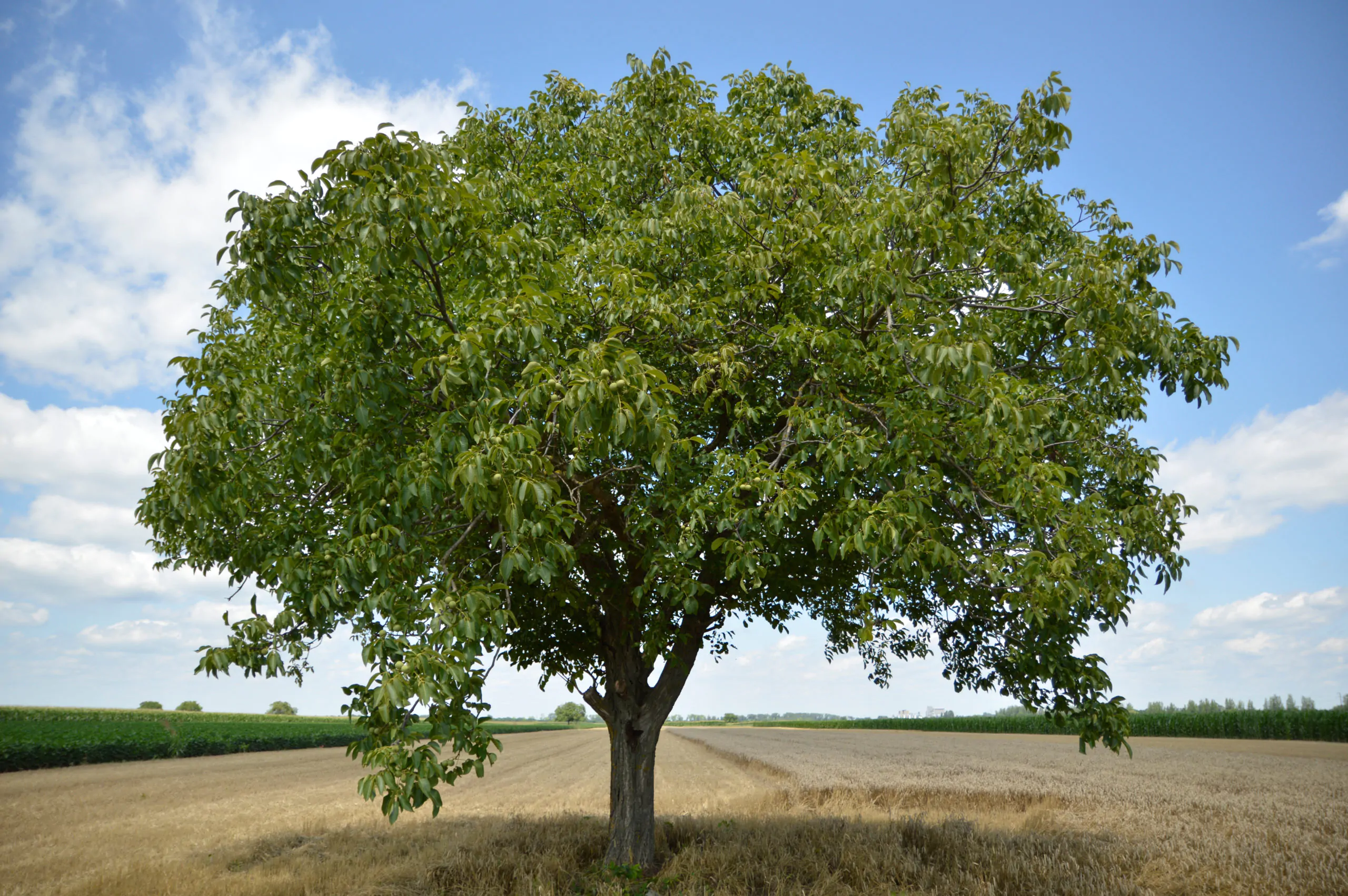
Walnut Tree
Juglans regia
Basic Information
🌿 Family: Juglandaceae🗺️ Zone: 4-9
Other Names:
- Persian Walnut
- English Walnut
- Carpathian Walnut
🌡️ Ideal Temperature : 45°F – 85°F
🔥 Heat Tolerance: Up to 100°F
❄️ Cold Tolerance: Down to -30°F
🌱 Type: Perennial
Layers
- Canopy
Description
The Walnut Tree is a fast-growing deciduous tree that can reach up to 30 meters (98 feet) in height with a broad canopy spanning approximately 18 meters (59 feet). It is light-demanding and thrives in full sun. The tree produces large, compound leaves that emit a lemon or lime scent when crushed. Both male and female flowers are present on the same tree, with pollination occurring via wind. The fruit, commonly known as a walnut, is encased in a green husk that matures and splits to reveal the hard-shelled nut inside.
🌞💧 Sun and Water Requirements:
Prefers full sun and well-drained, fertile soil with a pH between 6 and 7. While young trees benefit from regular watering, mature trees are relatively drought-tolerant. Avoid overwatering to prevent root diseases.
✂️🫘 Methods to Propagate:
Walnuts can be propagated from seeds or grafted cultivars. Seeds should be stratified by exposing them to cold temperatures before planting. Grafted trees often bear fruit earlier than seed-grown trees.
🧑🌾👩🌾 When to Harvest:
Harvest walnuts in late autumn when the green husks begin to split. Collect fallen nuts promptly to prevent spoilage. After harvesting, remove the husks and allow the nuts to dry before storage.
Purpose
In permaculture, the Walnut Tree serves multiple functions:
- **Edible:** Provides nutritious nuts rich in healthy fats and proteins.
- **Medicinal:** Various parts of the tree have been used traditionally for their medicinal properties.
- **Wildlife Attractor:** Offers habitat and food for various wildlife species.
- **Timber:** Produces high-quality wood valued in furniture making and carpentry.